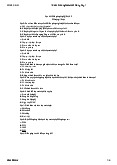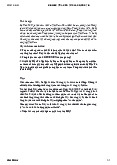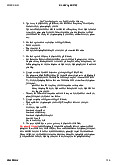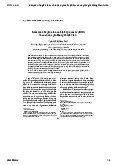


Preview text:
18:38 1/8/24
KỊCH BẢN Speaking TỔ 3 - jhh
KỊCH BẢN SPEAKING TỔ 3: FESTIVAL:
RIO DE CARNIVAL IN BRAZIL Introduction
Hà An: Carnival is one of the most popular and vibrant festivals
in the world. It is a celebration of life, culture, and diversity. The
festival has a rich history and is deeply rooted in Brazilian culture.
Hà Anh: The origins of Carnival can be traced back to ancient
Rome and Greece, where people would celebrate the end of
winter with feasting and drinking.
Ngọc Anh: When Christianity arrived in Brazil, the festival was
adapted to fit the religious calendar, and it became an
important part of the country's cultural identity.
The History of Carnival in Brazil
Minh Hồng: Carnival was brought to Brazil by Portuguese
settlers. The first Carnival parade was held in Rio de Janeiro in
1840, and it has since become one of the most famous festivals in the world.
Hà My:The Carnival is a celebration of life, music, and dance. It
takes place every year before Lent, which is a period of fasting
and sacrifice in the Christian calendar. The Samba Parade
Trà My:The highlight of the Carnival is the Samba Parade. This
is a competition between different samba schools, each with
their own elaborate floats, costumes, and dancers.
Mạnh Hiệp: The Samba Parade takes place in a purpose-built
stadium called the Sambadrome. Thousands of spectators
come to watch the parade, which lasts for several hours and
features hundreds of performers. Carnival Traditions about:blank 1/3 18:38 1/8/24
KỊCH BẢN Speaking TỔ 3 - jhh
Bá Hoàng: One of the key traditions of Carnival is the use of
masks and costumes. These are often elaborate and ornate,
and can be used to represent different characters or themes.
Đức Đạt:Another important aspect of Carnival is music and
dance. Many Carnival celebrations feature lively music and
dancing. This creates a festive and energetic atmosphere that
encourages people to let loose and have fun.
Street Parties and Blocos
Văn Dũng:In addition to the Samba Parade, there are also
countless street parties and blocos during the Carnival. These
events take place all over the country and are open to everyone.
Hà An:The street parties and blocos are known for their lively
music, dancing, and drinking. People wear colorful costumes,
and the streets are filled with confetti and streamers.
Regional Variations of Carnival in Brazil
Hà Anh: While the Carnival festival is celebrated throughout
Brazil, there are also regional variations of the festival that
reflect local traditions and cultures.
Ngọc Anh:For example, in Salvador da Bahia, the Carnival is
known for its Afro-Brazilian music and dance, while in Recife
and Olinda, the Carnival features giant puppets and frevo music. Carnival Food and Drink
Minh Hồng:No festival in Brazil would be complete without
delicious food and drink, and the Carnival festival is no exception.
Hà My:Some of the most popular Carnival foods include
feijoada, barbecued meat, and coxinha. As for drinks,
caipirinhas (a cocktail made with cachaça, lime, and sugar) are a staple of the festival.
The Importance of Carnival in Brazilian Culture about:blank 2/3 18:38 1/8/24
KỊCH BẢN Speaking TỔ 3 - jhh
Trà My:Carnival is more than just a festival in Brazil – it is an
integral part of the country's culture and identity.
Mạnh Hiệp:The festival brings people from all walks of life
together in a celebration of diversity, creativity, and joy.
Bá Hoàng: It is a time when social and economic barriers are
temporarily lifted, and people can express themselves freely
through music, dance, and costume.
Đức Đạt:Carnival is also a reflection of Brazil's artistic and
musical traditions. The samba music and dance that are central
to the festival have become synonymous with Brazilian culture
Văn Dũng:And have been recognized as UNESCO Intangible
Cultural Heritage. The festival is a testament to the creativity
and passion of the Brazilian people Conclusion
Hà An:Carnival is a truly unique and unforgettable experience.
It is a celebration of life, culture, and diversity that brings
people together from all over the world.
Hà Anh:Whether you're watching the samba parade, dancing
at a bloco, or trying new foods and drinks
Ngọc Anh:There's something for everyone to enjoy during this incredible festival.
Minh Hồng:So if you ever have the chance to visit Brazil
during Carnival, don't hesitate – join in the fun and experience
the magic of this amazing event for yourself! about:blank 3/3




